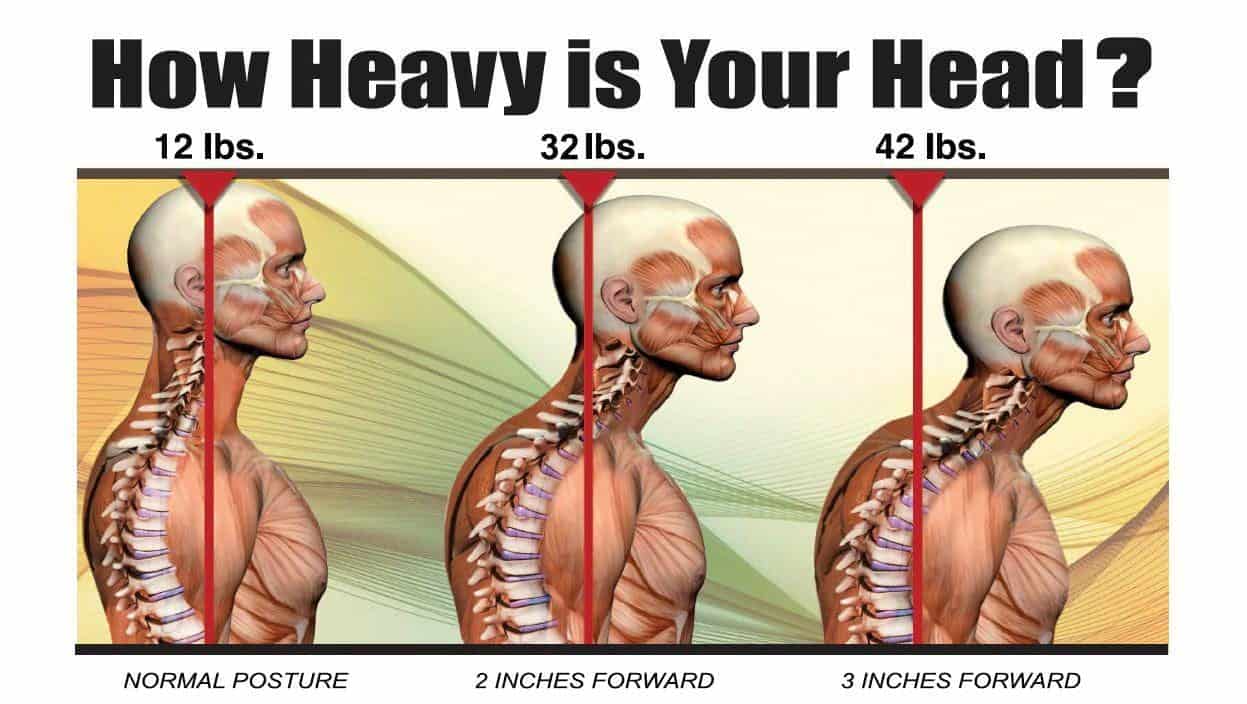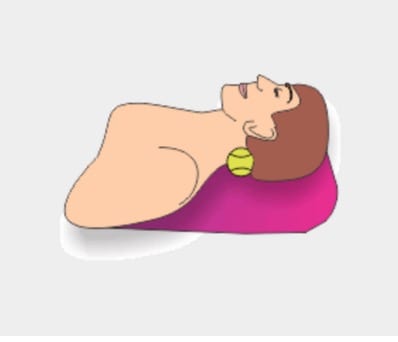Headaches are a very common health concern, affecting nearly 50% of the population in year. Many patients that we see suffer from chronic headaches that affect their quality of life. To help better understand headaches, we will be featuring the types of headaches, and remedies to help better manage them. This month we will be focusing on tension headaches.
Five Ways To Help Your Tension Headaches
Have you ever felt your headaches worsen while at work? Does it feel like you are wearing a tight headband from the 90s? Do you feel the back of your head pull downwards and your shoulders feeling heavy as if you were wearing a heavy backpack? These could be the signs of a tension headache.
 Symptoms:
Symptoms:
Tension headaches are very common; they are the ninth most common reason people see their family physician1,2. People will usually feel tension in the back of the neck, base of the skull and, pain into the jaw and above the eyes. Some people feel a tight band around their head when experiencing tension headaches:
Causes:
There are many reasons why these muscle become tense, including eye strain, fatigue, smoking, caffeine or poor posture3. Most cases we see at the clinic are the result of poor posture. Before you begin to straighten out your spine, examine your posture right now, does it look like this:

Most of us look like the two poor chaps on the right. Poor posture results in slouching which increases tension in the upper back and neck muscles. With time, these muscles continue to tighten and can eventually lead to tension headaches.
How can you avoid tension headaches? Here are a few tips to help:
Home Treatment
- Proper ergonomics. Ensure your monitor is at eye level. This will help decrease the load on the back and neck muscles.

- Stretches: Frequent stretching breaks can help give the muscles a chance to relax. Stretching also increases blood flow to the neck and back muscles allowing repair and healing. Here are a few stretches you can do at your workplace. (Link)
- Tennis Ball Stretch: A great way to help work on your tense neck muscles – try the tennis ball stretch. Take two tennis, put them in a sock and rest the base of the skull against the tennis balls as shown:

- Heat therapy can help alleviate the tension in your back and neck muscles. Heating pads and epsom salts baths can help sooth sore muscles and allow the muscles to heal.
- Foam rolling is a great way to stretch out the spine after a long day at the office. When rolling, the spine gets an opportunity to lengthen and stretch, which can help reduce tightness in the nearby spinal muscles. Here is a link to our famous brochure (link)
Professional Treatment:
For some people, the tension in their neck and shoulders may have become so bad that the usual home treatment options may no longer be enough to help. To help your tension headaches you may need to seek professional help. Here are a few options:
- Registered Massage Therapy: A registered massage therapist can help stretch and loosen the affected muscles by working away at ‘trigger points’. These points can cause the pain associated with tension headaches
- Chiropractic Care: By keeping the spine mobile, chiropractic care can help keep the spine flexible, mobile and in turn help decrease stress and tension that has accumulated in the upper body.
- Graston Therapy: Known affectionately by some as “butter knives”, these metal instruments work wonders by breaking down scar tissue and adhesions, while relaxing and stretching the affected muscles. Patients will usually start to see positive changes within six sessions.
- Physiotherapy: All those years of poor posture can weaken the upper back muscles, causing a condition called upper cross syndrome. Strong muscles can lead to better posture which in turn can help reduce the intensity of tension headaches.
As you can see, tension headaches though very common, can be managed and overcome. If you would like to learn more about your specific condition and options for you call us for a free consultation 905-593-1605.
References:
- Stovner LJ, Hagen K, Jensen R, Katsarava Z, Lipton RB, Scher AI, et al. (2007) The global burden of headache: a documentation of headache prevalence and disability worldwide. Cephalalgia 27:193-210.
- Vos T, Flaxman AD, Naghavi M, Lozano R, Michaud C, Ezzati M, et al. Years lived with disability (YLDs) for 1160 sequelae of 289 diseases and injuries 1990-2010: a systematic analysis for the Global Burden of Disease Study 2010. Lancet. 2012 Dec 15. 380(9859):2163-96. [Medline].
- http://www.healthline.com/health/tension-headache#Treatment5
 Symptoms:
Symptoms:

